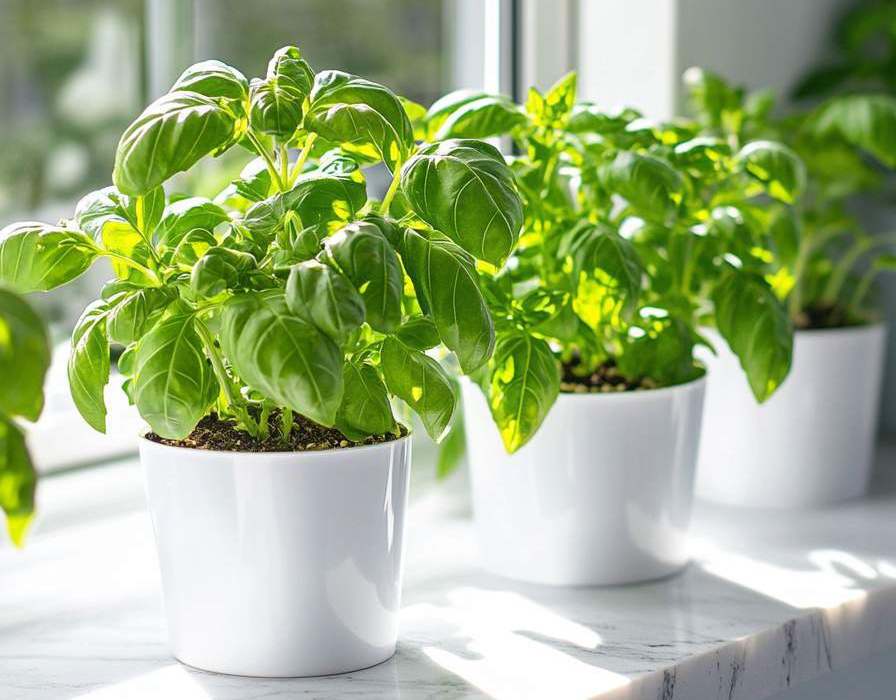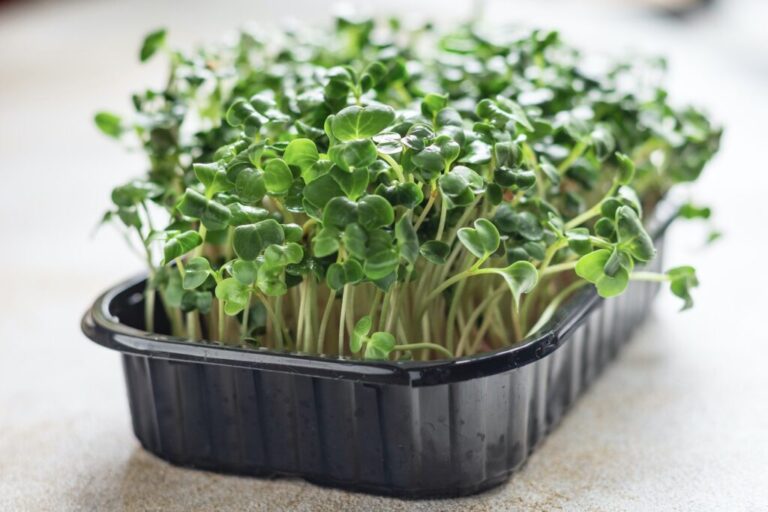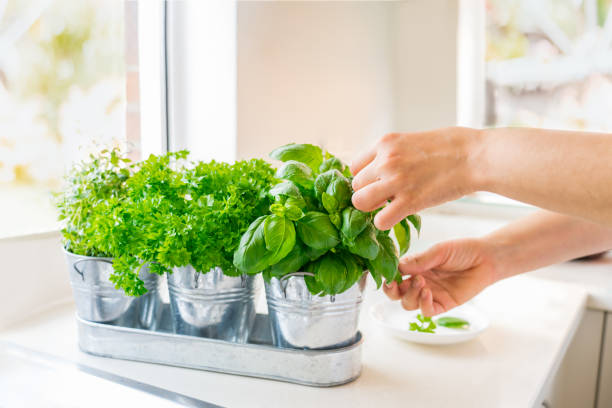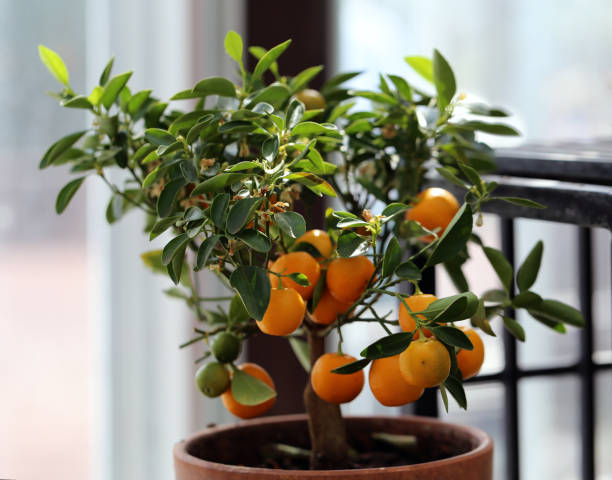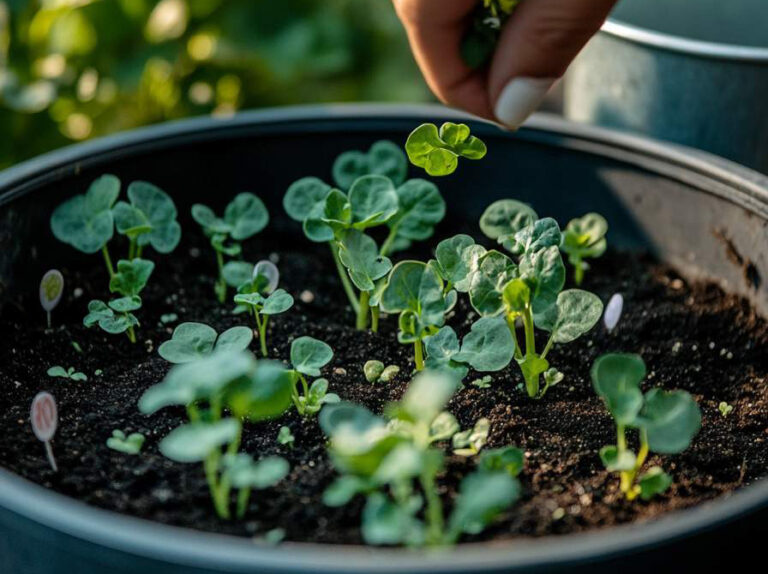How to Grow an Indoor Basil Plant: Your Guide to Creating an Indoor Basil Garden
Have you ever dreamed of snipping fresh basil leaves straight from your kitchen? Well, creating an indoor basil garden is not only possible but easier than you think! Whether you’re aiming to add a touch of green to your kitchen or want fresh herbs all year round, growing basil indoors can bring both beauty and flavor to your space. Let’s dive into how you can nurture a thriving indoor basil plant with just a little bit of care and love.
Why Grow Basil Indoors?

Basil is a versatile herb that elevates a variety of dishes, from pesto to soups. Growing it indoors not only keeps this flavorful herb at your fingertips but also allows you to control the environment, especially during the colder months. Growing basil indoors in winter ensures you have fresh basil even when outdoor gardens are dormant.
Choosing the Right Pot for Your Basil
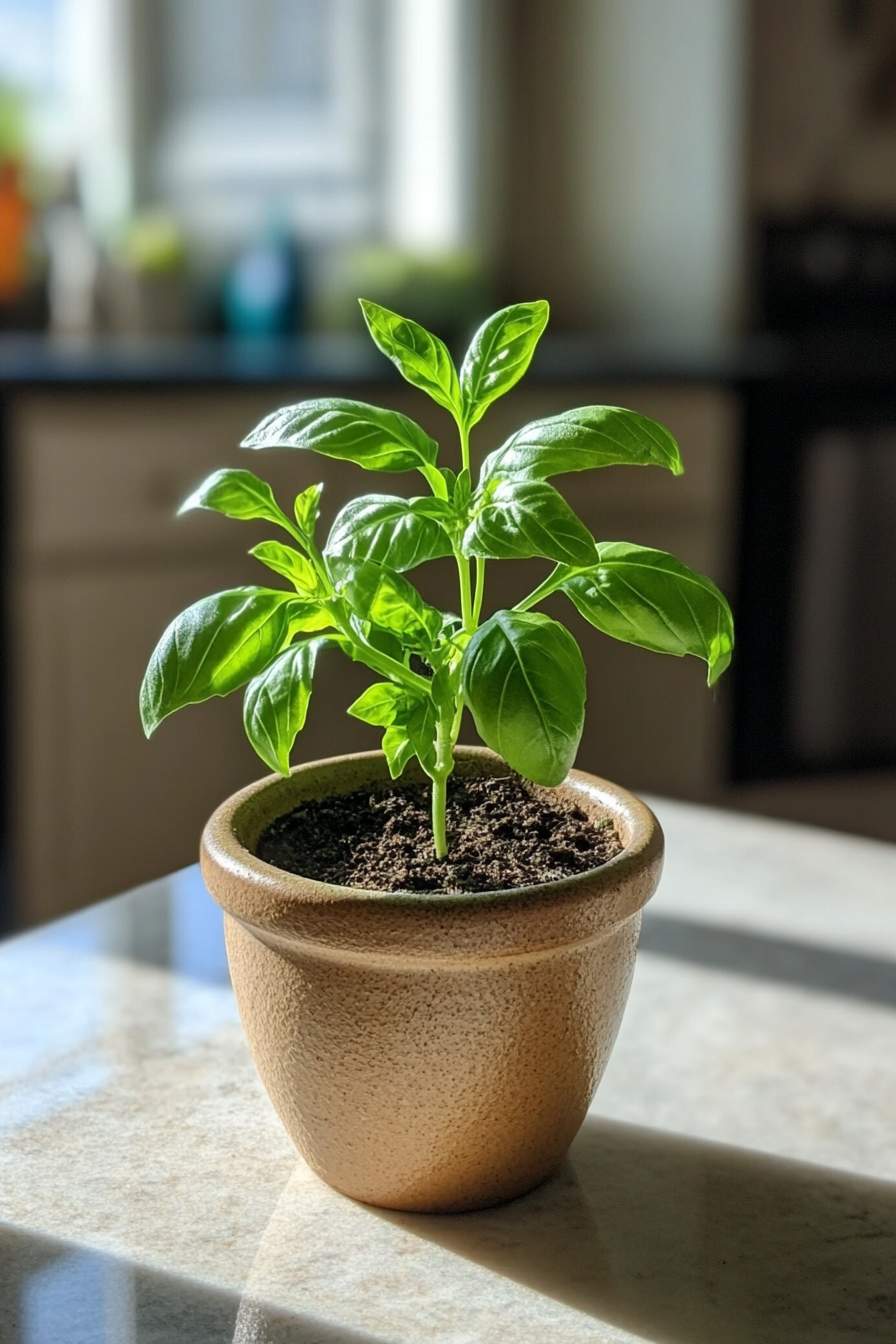
To start your indoor basil garden, the right container is essential. Basil in pots growing requires a pot with good drainage, as basil plants do not thrive in waterlogged soil. A pot about 6-8 inches deep will work perfectly for a single plant, but make sure there’s a hole at the bottom to let excess water escape.
How to Plant Basil in a Pot
- Choose a pot: As mentioned, make sure it has a drainage hole.
- Fill with well-draining soil: Basil prefers slightly moist but not soggy soil, so choose a high-quality organic potting mix.
- Planting: If you’re starting from seeds, plant them about 1/4 inch deep and lightly cover them with soil. If you’re transplanting, dig a small hole in the center and place the basil plant, making sure the roots are well covered.
- Water: After planting, give your basil a gentle watering to settle the soil around the roots.
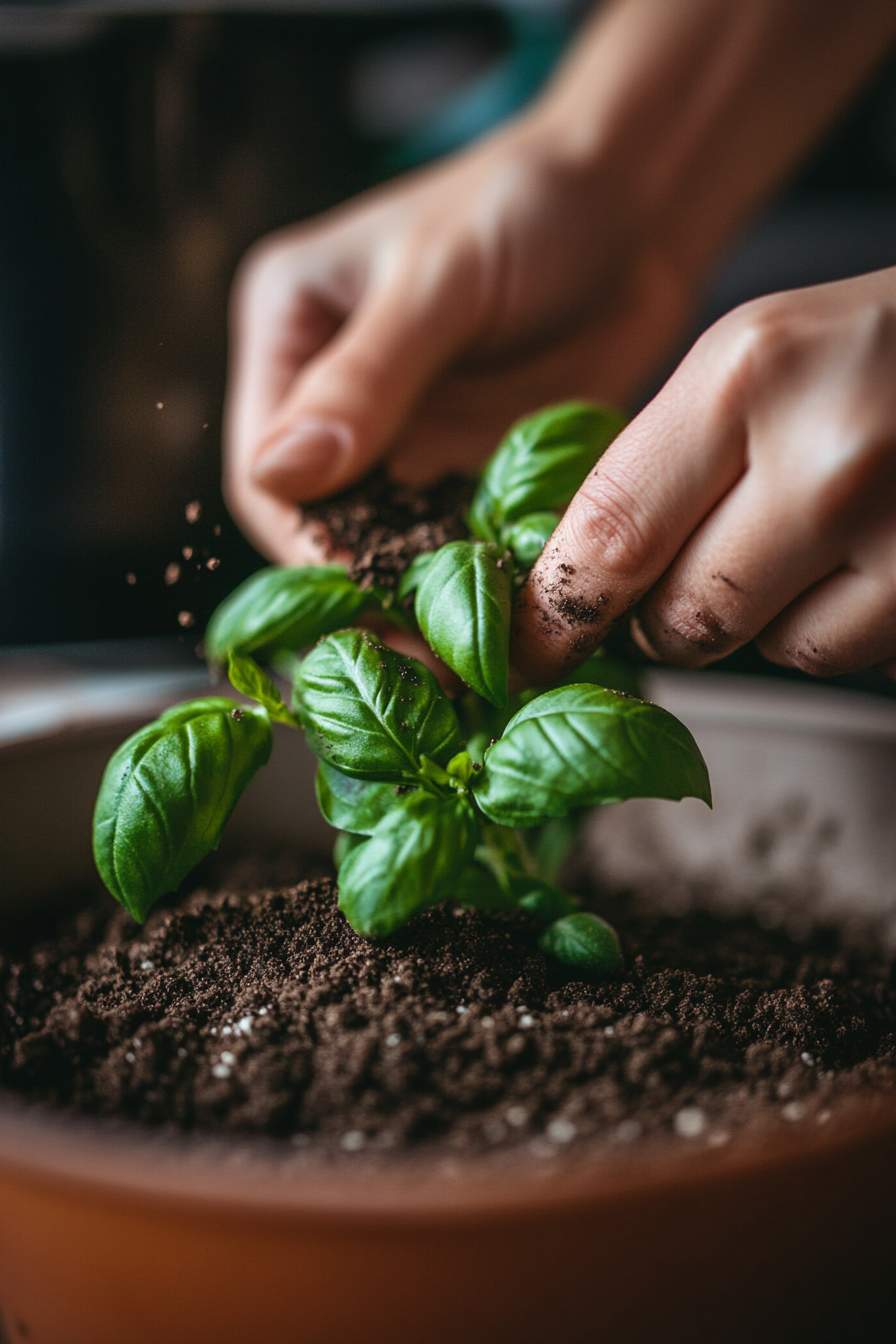
Best Place to Keep Your Basil Indoors
One of the keys to keeping a basil plant alive indoors is choosing the right spot. Basil indoors growing needs plenty of sunlight, around 6-8 hours of direct sunlight per day. A sunny windowsill is perfect for this. If you lack natural sunlight, consider using grow lights to help your basil thrive.
For kitchen basil plants, keeping them near a window provides easy access while cooking and ensures they receive the light they need. However, ensure they’re not too close to a drafty window in the winter to avoid cold damage.

How to Care for Your Indoor Basil Plant
Basil is generally easy to care for, but there are a few things to keep in mind:
Watering
Taking care of basil plants involves regular watering, but be careful not to overwater. Water when the top inch of soil feels dry, and ensure excess water drains out to prevent root rot. During the winter, basil may require less water due to slower growth.

Humidity and Temperature
Growing basil indoors in winter can be tricky because basil loves warmth and humidity. Keep the plant in a room with temperatures above 60°F (15°C). If the air in your home is dry, mist your plant occasionally to increase humidity.
Pruning and Harvesting
To encourage bushier growth, pinch off the top leaves regularly. This helps prevent the plant from flowering and maintains the strong flavor of the leaves. When it’s time to harvest, cut just above a leaf node to promote new growth.
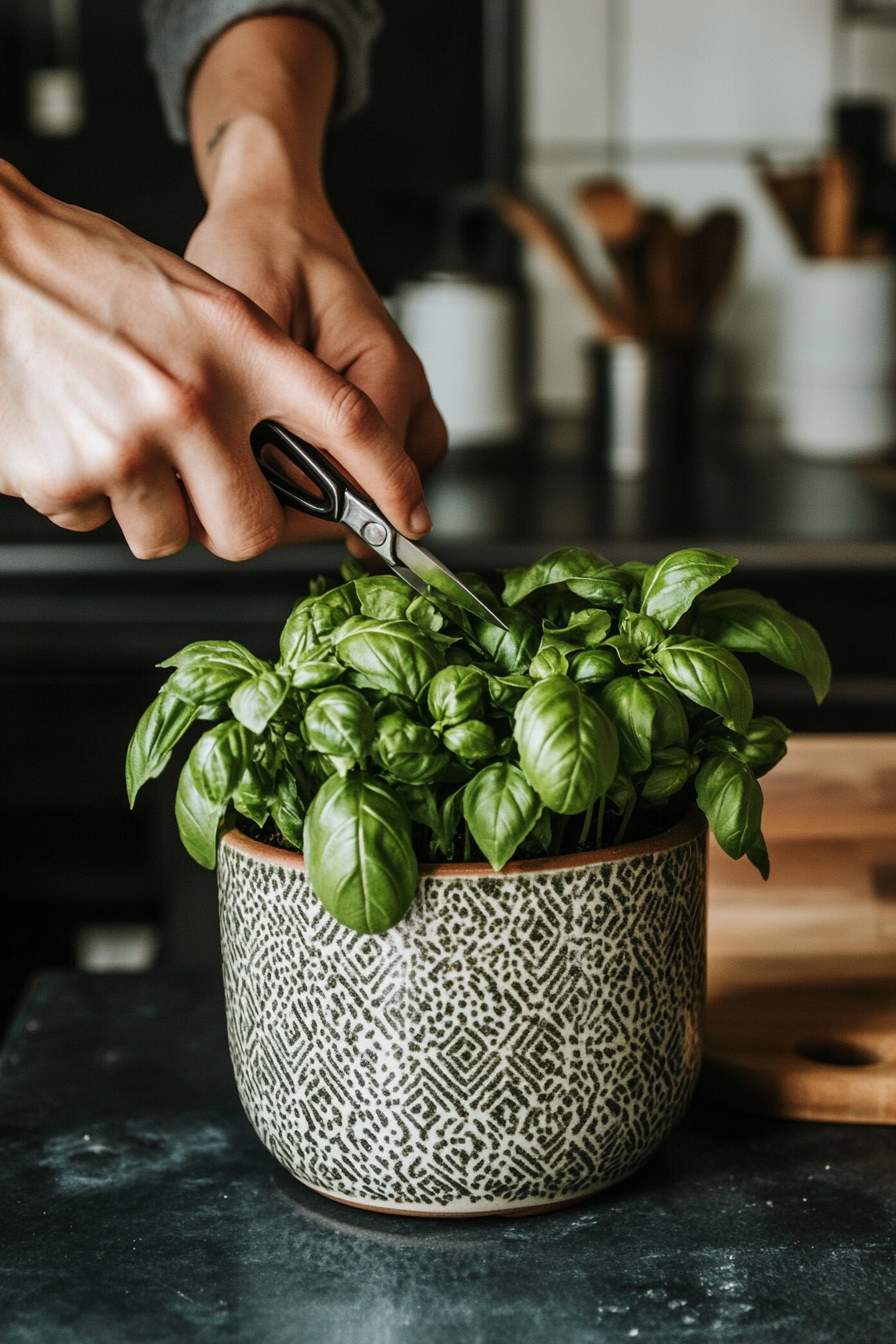
Common Problems with Indoor Basil Plants
Even with great care, you may encounter some issues. Here’s how to handle them:
- Yellowing Leaves: This could be a sign of overwatering. Adjust your watering schedule to ensure the soil dries out slightly between waterings.
- Leggy Growth: If your basil is growing tall and spindly, it’s not getting enough sunlight. Move it to a brighter location or invest in grow lights.
- Pests: While rare indoors, pests like aphids can sometimes attack basil plants. Wipe the leaves with a damp cloth or spray them with a mild soap solution to keep pests at bay.
Growing Basil Indoors Year-Round
Even though basil thrives best in warm weather, it’s entirely possible to grow basil indoors during winter. Keeping the plant in a warm, sunny spot and maintaining proper humidity levels will ensure your indoor basil plant survives the colder months. Additionally, if your indoor environment gets very dry, you can place a humidifier nearby to help your basil stay happy.
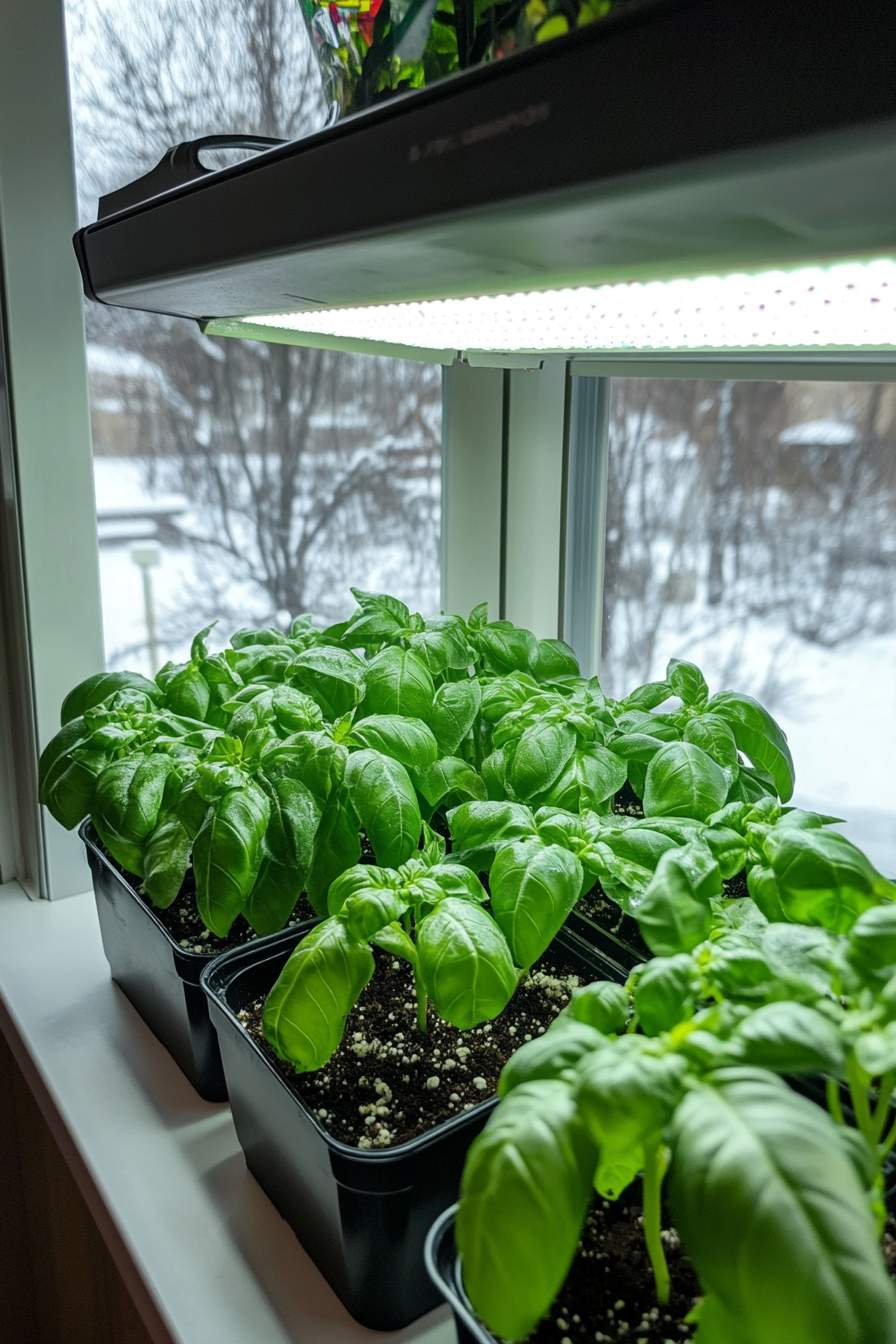
Conclusion: Create Your Own Indoor Basil Garden Today
Whether you’re using basil in your favorite pasta dish or adding a fresh garnish to your salad, having a kitchen basil plant is a game changer. With just a bit of care, your basil plant will thrive indoors all year long, bringing fresh, fragrant leaves right to your kitchen.
Have fun planting, and here’s to growing your own indoor basil garden!


